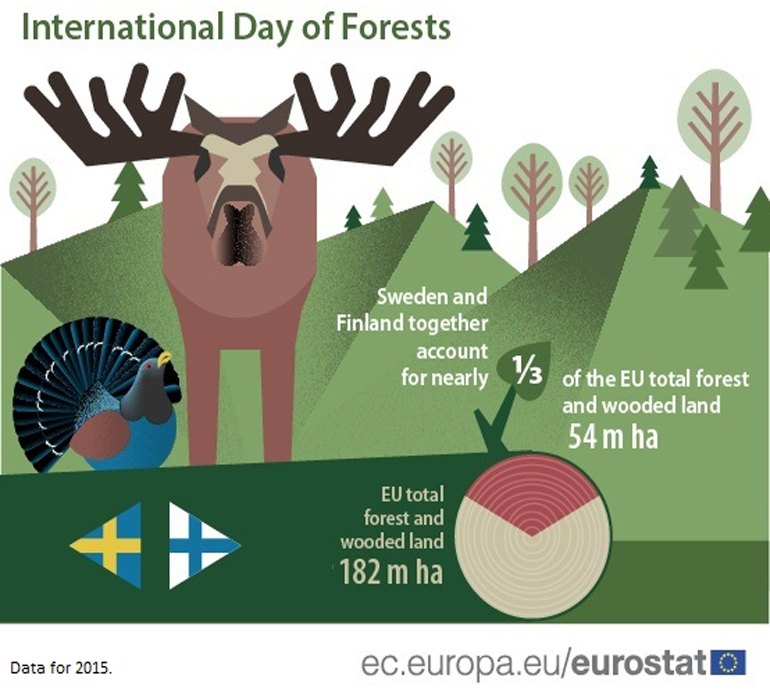Today is the International Day of Forests (IDF), which is celebrated every year on March 21 to raise awareness of the importance of forests of all types. According to Eurostat, the statistical office of the European Union (EU), the EU had close to 182 million hectares (ha) of forests and other wooded lands in 2015. This corresponds to 43 percent of the EU's total land area and is a slightly larger share than the land area used for agriculture, around 41 percent.

In seven EU Member States, more than half of the land area was wooded in 2015. Just over three-quarters of the land area was wooded in Finland and Sweden, while Slovenia reported 63 percent. The remaining four EU Member States, each with shares in the range of 54–56 percent, were Estonia, Latvia, Spain, and Portugal.
Sweden reported the largest wooded area in 2015 (30.5 million ha), followed by Spain (27.6 million ha) and Finland (23.0 million ha). Of the total area of the EU covered by wooded land in 2015, Sweden and Finland together accounted for 29.4 percent.
The statistics on forest cover are taken from a five-yearly survey and the next survey will be in 2020. Forest area as a proportion of the total land area is a global indicator of the UN Sustainable Development Goals (SDGs). It is also included in the set of EU SDG indicators used to monitor progress towards the SDGs in an EU context.
Greenhouse gas absorption
Forests play a significant role in helping to reduce greenhouse gas (GHG) emissions. EU forests absorbed 417 million tonnes of carbon dioxide (CO2) equivalent in 2016, corresponding to around 9 percent of total GHG emissions (4 441 million tonnes), compared to less than 7 percent (375 m tonnes) in 1990.



